Harvard University scientists have discovered a new world of mystery and complexity at the micro level of the brain.
A new study authored by molecular biologist Dr. Jeff Lichtman and his colleagues and published last week in the journal Cell offers a glimpse inside the neurons of a mouse's brain in unprecedented detail.
Lichtman told The Huffington Post that 20 scientists worked on the six-year project, with the aim of developing high-resolution images of the animal's brain in an effort to better understand this complex organ.
The scientists developed technologies that created digital models of the actual brain tissue of mice, allowing researchers to examine its detailed structural organization.
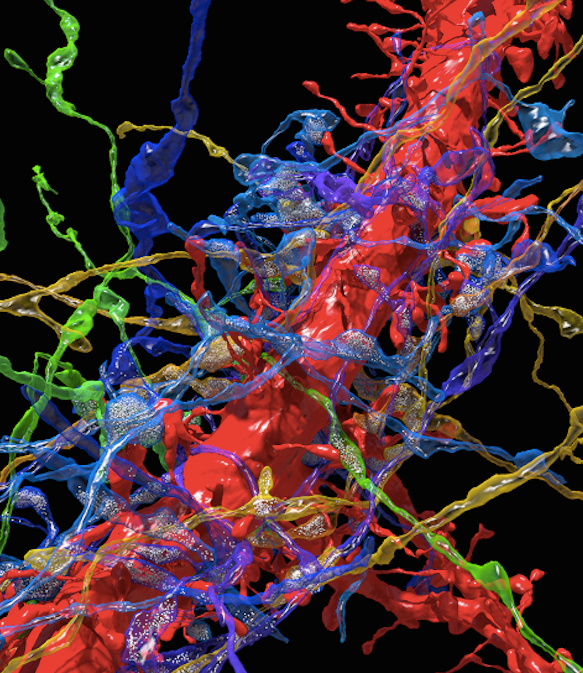
"The goal of this study was to help us fathom this most mysterious part of biology," Lichtman said in a Harvard video about the research. "Our goal in this case was to do that by looking at brains and describing them at very high resolutions."
Using the new imaging technique, the researchers collected tens of thousands of ultra-thin brain sections -- each one-thousandth the thickness of a single strand of hair -- on a single film strip. They were able to create images of these sections at high resolution by using new software tools to color the neural connections.
Scroll down for more high-resolution images of a mouse brain in technicolor detail:
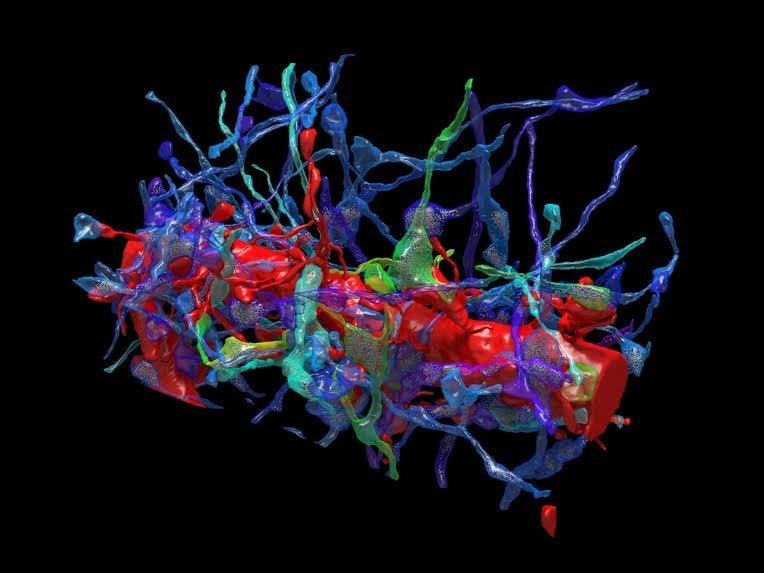
The image above depicts a brain cell, also known as a neuron, which is designed to carry electrochemical messages through the nervous system. (Click here for a diagram and detailed breakdown.) You can see axons, or nerve fibers (pictured in blue, purple and green), which bundle together at junctions called synapses -- the bridges between neurons that allow the cells to communicate with one another.
The axons are attached to the dendrite (pictured in red), a branch-like extension of a neuron, which receives electrical impulses from other cells and communicates them to the neuron. These electrical impulses are how the brain registers external things like sunlight or cold, as well as internal messages from other parts of the body.
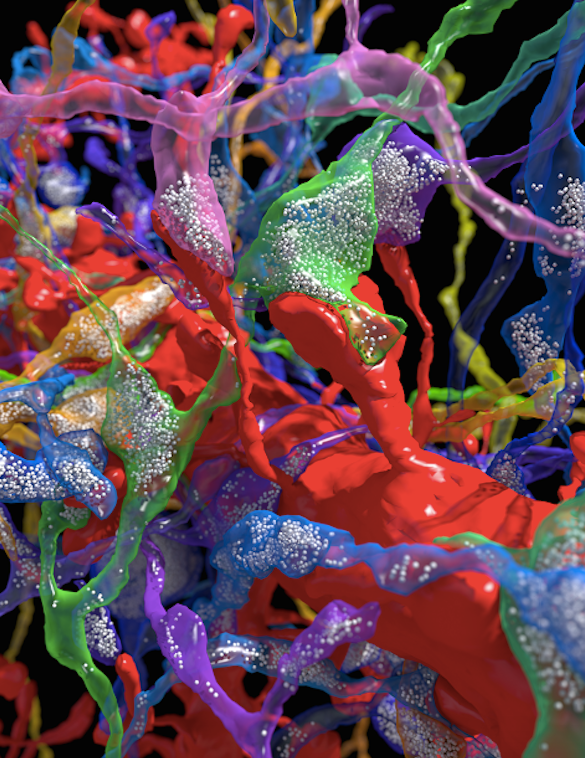
In this close-up image you can see a high-resolution view of the synapses (which, again, are the connectors responsible for communication between neurons) running along the branch of a dendrite. Those little white dots inside the axons are synaptic vesicles, and they are responsible for storing the neurotransmitters that are released at the synapse. These neurotransmitters carry information throughout the brain and the body, and can affect things like mood and sleep.
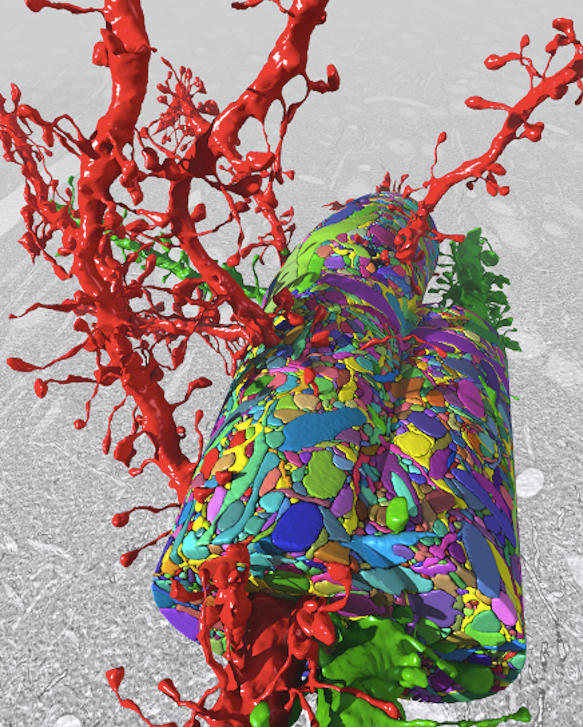
This reconstruction of one brain section shows large dendrites (pictured above and below in red) surrounded by other parts of the neuron.

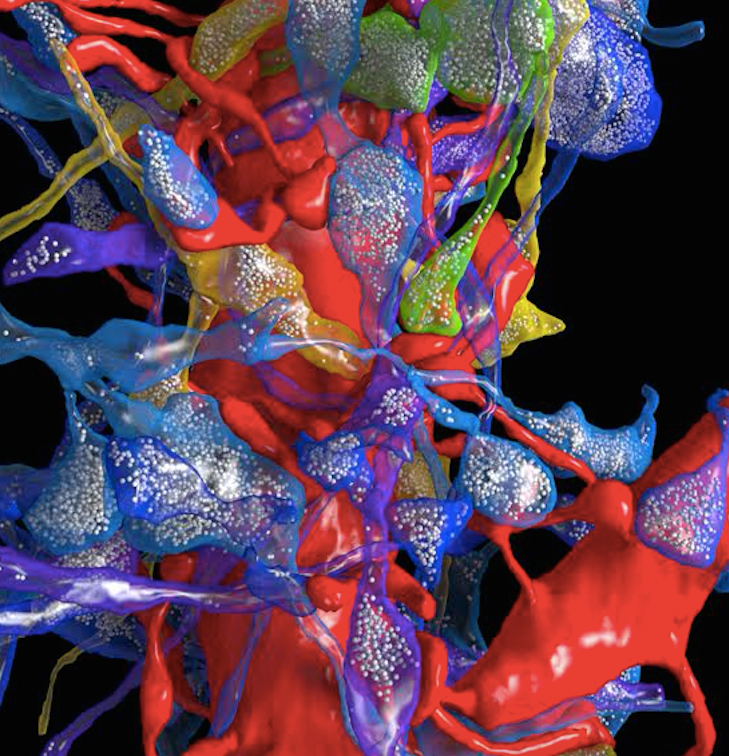

The image above shows a batch of neurons extending long dendrite branches.
All images by D.R. Berger, N. Kasthuri, & JW Lichtman, Harvard University.
Watch the video below for an explanation of the paper from its authors: